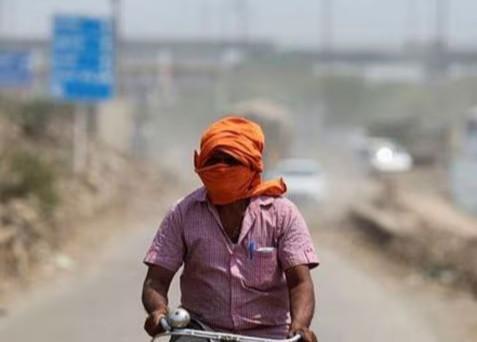
Extreme Heat Endangering Health & Productivity of Workers: Report
As the world grapples with the rising threat of climate change, a recent report by the World Health Organisation (WHO) and the World Meteorological Organisation (WMO) has highlighted the alarming impact of extreme heat on the health and productivity of workers worldwide. The report, which has sent shockwaves across the global workforce, has sounded a loud alarm, emphasizing the urgent need for measures to mitigate the effects of heat stress on workers.
According to the report, worker productivity drops by 2-3% for every degree above 20°C. This means that as temperatures rise, workers’ ability to perform their jobs effectively declines significantly. The report also underscored that manual workers in agriculture, construction sectors, and vulnerable populations like children and the elderly in developing countries are particularly at risk.
Heat stress, which is a leading cause of morbidity and mortality worldwide, is particularly perilous for workers who are already vulnerable due to poverty, lack of access to healthcare, and inadequate working conditions. The report highlighted the devastating impact of heat stress on workers, including heatstroke, dehydration, and kidney dysfunction.
The report’s findings are a stark reminder of the need for urgent action to protect workers from the scourge of heat stress. In many parts of the world, workers are forced to toil in sweltering heat, often without access to basic amenities like shade, water, and cooling. The consequences are severe, with workers suffering from heat-related illnesses, injuries, and even death.
The report’s emphasis on the need for measures to mitigate heat stress is particularly timely, given the alarming rise in global temperatures. Climate change is expected to worsen, leading to more frequent and severe heatwaves, droughts, and other extreme weather events. This means that workers will be increasingly exposed to hazardous conditions, putting their health, productivity, and livelihoods at risk.
So, what can be done to address the crisis? The report recommends a range of measures, including providing heat stress training to workers, implementing heat stress prevention strategies, and ensuring that workplaces are designed to minimize heat exposure. Governments, employers, and workers themselves must work together to create safer, healthier working conditions.
In the face of the mounting crisis, it is imperative that we take immediate action to protect workers from the ravages of heat stress. The report’s findings are a wake-up call, underscoring the urgent need for a global response to this critical issue.
News Source:
https://repository.inshorts.com/articles/en/PTI/45d9bd2d-ff57-417c-9e5f-831344bb34b0






